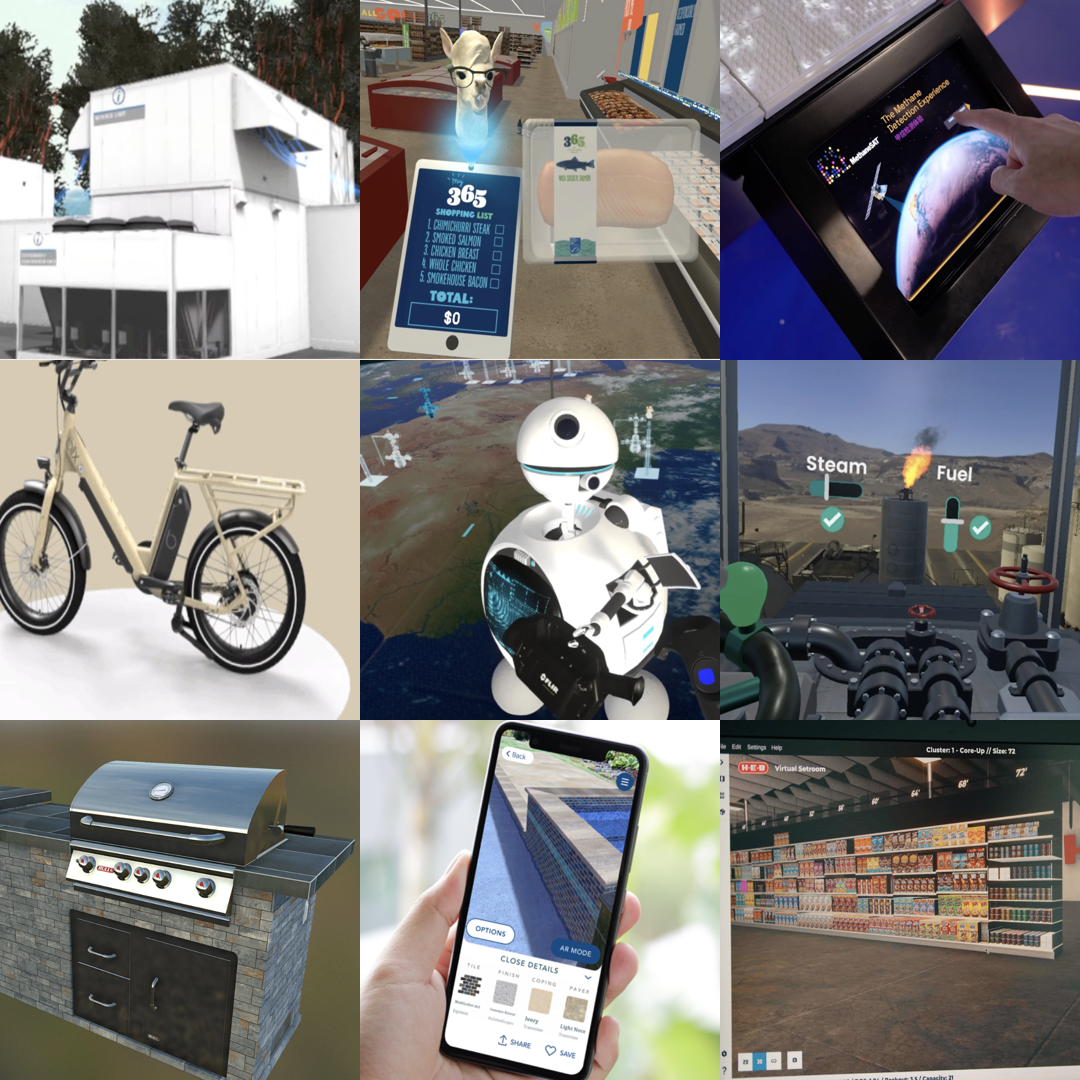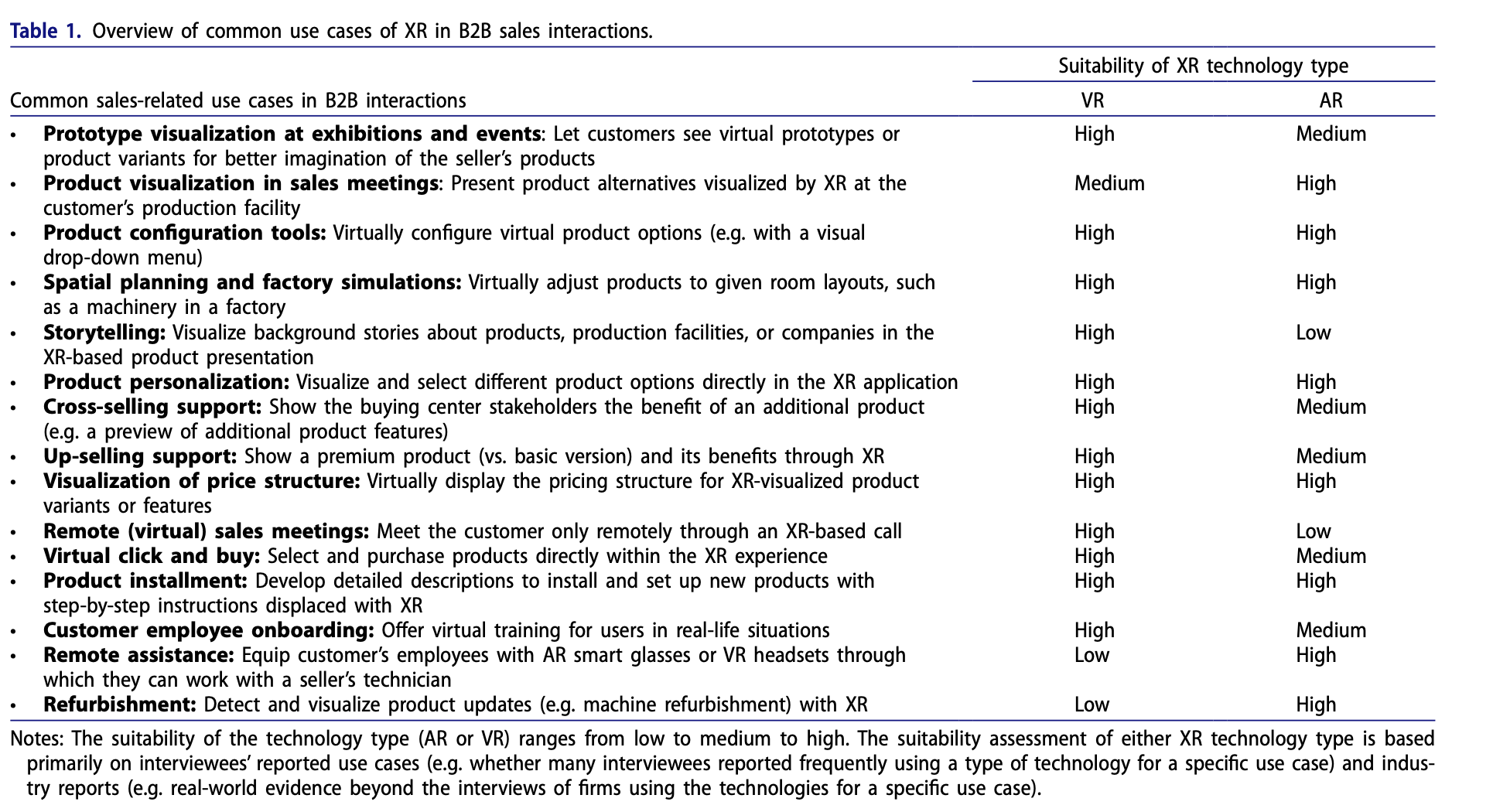
New Study on Extended Reality in B2B Sales. What Does it Mean?
Recent study underscores the impact of immersive reality experiences can have on B2B sales process. Plus where and how.
Warning: If this article sounds like I’m selling the impact of immersive reality, I definitely am. Or am I just sharing truth!? Because today, I have some real research to back me up.
As founder of Fair Worlds, I’ve spent nine years demonstrating how immersive reality transforms marketing, sales, and customer engagement. We have worked across industries, including manufacturing, industrial, building, tech and retail. We have seen how stepping into a virtual product or visualizing a solution in 3D accelerates understanding, shortens buying cycles, and strengthens emotional buy-in.
True, there have been starts and stops to VR gear adoption (COVID was a bummer for VR). But XR and immersive reality today is much more than VR. It includes 3D animation videos, projection, augmented reality, 3D web demos/configurators and more. You start with a three dimensional experience of a product and expand your interactive story telling across many channels.
Last month, a newly published academic study on XR in B2B sales interactions confirms what I’m talking about… immersive reality doesn’t just “look cool”—it simplifies complex decisions, aligns buying teams faster, reduces friction, and positions companies as modern, innovative leaders. In short, this validates nearly a decade of real-world results.
About the Study: How It Was Done and Why It Matters
This new study, published in October 2025 in the Journal of Personal Selling & Sales Management, is one of the most comprehensive looks at how XR (VR, AR, 3D, and immersive reality) impacts B2B sales.
Citation: Janina Riether, Robin-Christopher M. Ruhnau & Christian Homburg (16 Oct 2025): Extended reality in B2B sales interactions, Journal of Personal Selling & Sales Management, DOI: 10.1080/08853134.2025.2546815
It includes interviews with:
- 26 B2B salespeople across industries like machinery, healthcare, chemicals, IT, logistics, and aviation
- 10 B2B buyers and stakeholders from real buying centers
- 4 XR technology experts who build and deploy these solutions in the field
- Participants came from 31 companies across multiple countries, representing a wide range of B2B environments, complexity levels, and digital maturity.
The interviews were long-form, detailed conversations resulting in over 500 pages of transcripts. The goal was to understand not just whether XR works in sales, but how, why, and under which conditions it has the strongest impact.
The researchers then used grounded theory (a rigorous qualitative method) to map patterns across all interviews and build a clear conceptual framework that explains:
- What needs to be in place for XR to work in B2B sales
- What measurable benefits XR delivers for both buyers and sellers
- When and where those benefits are strongest
The result is the most validated and practical analysis of VR impact we’ve seen to date. And it mirrors almost exactly what we’ve observed over nine years of client work.
Note: for years, “XR” has floated around as a buzzword acronym. It’s meaning is Extended Reality, but it’s an umbrella term that includes VR (virtual reality), AR (augmented reality), 3D visualization, and immersive reality experiences. These are the tools that let people step inside ideas, products, environments, and stories rather than just look at them on a screen.
What the study found
The key findings were clear and strongly aligned with what we’ve seen in practice for 9 years, and why we refer to what we do as “full-journey immersive reality”:
The required conditions for XR success:
- Organizational resources (hardware, software, training)
- Sales team adoption readiness
- Customer adoption readiness
- Product complexity (best for high-involvement sales)
The customer-side benefits
- Simplified product evaluation
- Improved buying center coordination
- Better co-creation and product personalization
- Faster onboarding and lower downtime after purchase
Seller-side benefits
- Higher perceived innovation
- More persuasive storytelling
- Clearer value communication (easy upsell/cross-sell)
- Shorter sales cycles and lower cost-to-serve
Where XR works best
- Early-stage interactions (exploration, understanding, screening)
- Complex buying with many stakeholders
- Post-purchase interactions (installation, support, training)
In short: XR reduces friction, accelerates clarity, and elevates perceived innovation—exactly where B2B companies struggle most today.
A Model for XR Impact in B2B Sales
In the study was this very useful model of suitability for XR for different needs in the B2B marketing and sales process:

The Most Interesting Points Made
Given access to these long interviews, I pulled out some of the most interesting points made, with direct quotes to back them up:
1. XR delivers a “wow effect” that wins attention in crowded markets. – “Using the VR glasses has this wow effect. It impresses the stakeholders… the buying center is in the middle of a product experience instead of just there.”
2. XR usage signals a visibly innovative, future-ready brand. – “The reputation you create [by using XR] is crucial… [Our company] is regarded as one of the leading industrial service providers in digitalization because we have been doing this for a long time.”
3. Buyers interpret not using XR as a sign of being behind the curve. – “At first, we certainly tend to opt for a supplier that offers XR… [Without XR] you say: ‘We’ll have a company that’s not quite so innovative, which might not benefit us so much in the future.’”
4. XR can meaningfully reduce costly customer misunderstandings. – “One of the biggest advantages is preventing a lousy decision simply by not understanding it completely.”
5. XR lets buying teams see and evaluate products in their actual environment. – “You can really visualize how big the products are… you can recreate the lab one-to-one and show what it will look like in the customers’ lab.”
6. XR reduces internal friction inside complex buying centers. – “AR can be a building block for bringing different perspectives closer together… [and] help resolve conflicts more easily.”
7. XR enables persuasive ‘story-living,’ not just storytelling. – “Customers get to know the founder… go through the workshop virtually… They can tell the product’s story because they have experienced it. We call this story-living.”
8. XR significantly accelerates sales cycles by reducing travel and meeting time. – “We can serve more customers in a shorter time because we do not waste any traveling time… [XR] pays for itself extremely quickly.”
9. XR drastically cuts customer downtime and speeds troubleshooting. – “Smart glasses make customer service quicker… Customers want minimum machine downtime… XR technologies help because the customer doesn’t have to wait for a technician to come on-site.”
10. XR is most valuable exactly where B2B sales struggles most today—early-stage alignment and post-sale activation. – “The benefits of XR are most pronounced in the pre-purchase and post-purchase phases… simplifying evaluation, enhancing buying-center coordination, and facilitating cocreation.”
And Now, More Statistics!
Want further evidence of immersive reality’s impact on sales and marketing? Here are some recent industry stats that align with the study’s findings and relevance:
88% of B2B buyers say product complexity has increased in the last 3 years.
(Gartner, 2024)
74% of B2B buyers report that coordinating internal stakeholders is now the #1 barrier to purchase.
(Forrester, 2025)
82% of buyers say immersive product demos make them more confident in their decisions.
VR-based product demos increase understanding of complex products by 40–60%.
(Stanford Virtual Human Interaction Lab, 2024)
AR-guided installation/training reduces time-to-productivity by 30–50%.
(Accenture, 2024)
71% of industrial manufacturers already use (or plan to use) VR/AR for sales and customer support.
(Deloitte Manufacturing Outlook, 2025)
Immersive reality increases emotional engagement by 2.3× compared to video alone.
(Neuro-Insight Immersion Study, 2024)
Companies using XR in sales see a 22–34% faster sales cycle.
(Boston Consulting Group, 2024)
B2B brands using immersive experiences report a 17–29% lift in win rates.
(Microsoft Dynamics 365 + XR Partner Study, 2025)
I'd love to brainstorm immersive reality for your B2B marketing and sales plans. Drop me a line at hello@fairworlds.com.
